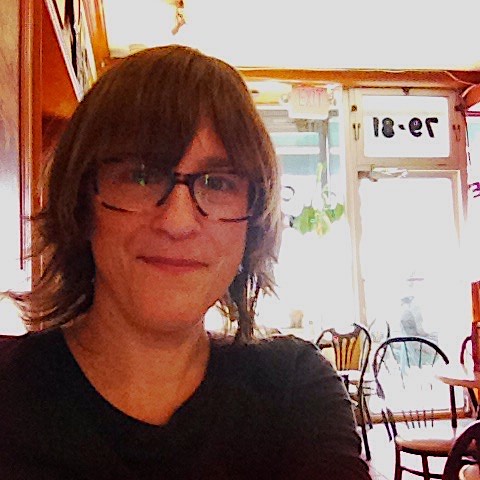This PowerPoint Could Help Prevent Teen Suicide
From Little Hands of Stone x Seattle Children's Hospital
This isn’t your typical suicide prevention campaign made up of somber vignettes. Rather, the sixty-second spot “Scary, Not Scary” uses a PowerPoint presentation and the voice of a teenage girl to let parents know it is okay to talk to their kids about suicide.
That’s because simply asking, “Are you thinking about suicide?” can lead to a discussion that could save a life.
Here, we talk to Matt McCain and Michael Boychuk, co-founders of Little Hands of Stone, the agency behind the work.
Muse by Clio: What kind of research did you do to prepare to make this spot?
Matt McCain: With a topic this sensitive, we had to do tons of homework throughout the process. It started with involving the mental health experts at Seattle Children’s. We interviewed specialists on the front lines of mental health and suicide prevention to inform our strategy, craft the exact wording of the question—”Are you thinking about suicide?”—and evaluate the creative. Their input and approval gave us the confidence to take such a non-traditional approach. Next, we involved a creative team of young women, who are not too far removed from being teenagers themselves. As members of GenZ, they brought valuable insights. We made sure to gut-check this idea with teens. We hosted a youth advisory board and showed them storyboards. They pushed back on some of the choices we’d made, pushing for more empathy, less snark and visual simplicity. We listened, and it helped.
Why did you make the ad look like an informal PowerPoint presentation?
Michael Boychuk: We wanted this to feel as unlike an ad as possible. That raw, clumsy style of a PowerPoint helped us. If you have tween or teen kids like Matt and I do, or if you pay attention online, you realize the main tool of persuasion for young people these days is a PowerPoint/Google Slides presentation to get a gerbil, a first car, permission to date, an expensive Christmas present.
How did you write the dialogue and choose the images?
Matt McCain: Most importantly, it couldn’t feel written. It had to feel sincere and candid.
Michael Boychuk: For imagery, one thing we noticed from our research on teen PowerPoints, and from the input from the youth advisory group, is that young people don’t overthink the images. They grab the first thing they find in their Google search and slap it into the presentation.
Why was it important to empower someone from GenZ to be the one to guide adults as to how to initiate a discussion about suicide?
Michael Boychuk: Parents are afraid to ask this question, and giving scary statistics to push parents to act will backfire. One mental health expert told us, “More fear leads to more inaction.” We felt the only voice that could help adults get over their fear is that of young people. As adults, we need their permission to “go there.”
Matt McCain: Anecdotally, I was afraid to ask my 17-year-old daughter this question. As I worked on this project, I knew we had to overcome that fear. So one day while driving in the car together, I asked her, “Are you thinking about suicide?” She responded, “No, I’m not, but thanks for asking. We should all be emotionally available enough to have these kinds of conversations.” This is the kind of stuff adults need to hear.
What did you learn from making “Scary, Not Scary?”
Michael Boychuk: Teens are way sweeter and more empathetic that we give them credit for. They really do feel for how afraid their parents are to talk about mental health. Teens can get pinned as eye-rolling cynics, but they really do want healthy relationships and conversations with their parents. And the reaction we’ve been getting from parents is that it is so relieving and comforting to hear that.
CREDITS
Client: Seattle Children’s Hospital
Director of Brand and Creative Services: Candi Nicholson
Manager, Brand and Creative Services: Stacey Kryman
Agency: Little Hands of Stone
Matt McCain: Co-Founder and Head of Creative
Michael Boychuk: Co-Founder and Head of Creative
Tiffany Stone: Head of Creative Operations
Brooke Braafladt: Account Supervisor
Erin Miller: Creative
Kelley OHare: Creative
Post: Catch & Release
Editor: Andrew Franks
Audio & Sound Design: HEARby






